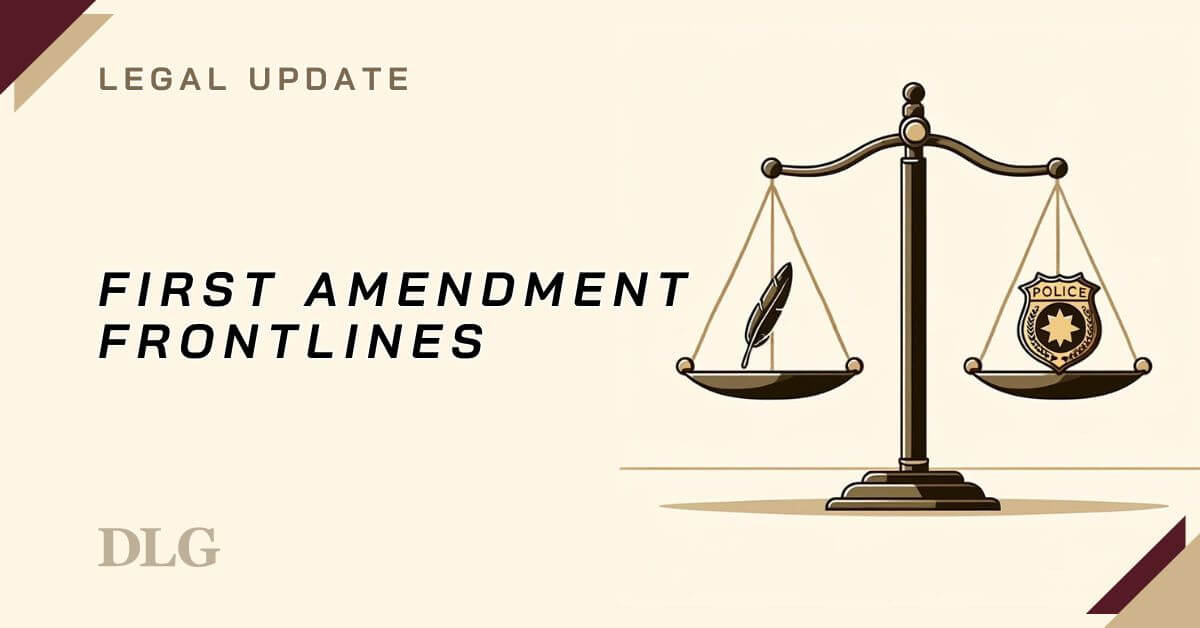Our case today deals with a traffic stop turned Terry stop because of a cracked windshield. It is important to note that according to Eighth Circuit case law, an officer’s “incomplete initial observations may give reasonable suspicion for a traffic stop,” even if subsequent examination reveals no traffic law violation.” In other words, unlike last week’s case, when it comes to traffic law if your first suspicion seems reasonable it cannot become unreasonable throughout the course of the investigation.
On that note, let’s review the facts surrounding the case.
FACTS
On March 5, 2019, Officer Johnson stopped Mr. Foster’s black Toyota Avalon for “having an unsafe windshield (several cracks).” After informing Foster of the reason for the stop, Officer Johnson asked Foster and his female companion for identification. Foster produced a driver’s license, but his companion denied having any identification and provided an identification that ultimately proved to be false. Officer Johnson observed that both occupants of the vehicle seemed nervous, reporting that Foster’s hands were visibly shaking as he retrieved his driver’s license.
When Officer Johnson called in the information, dispatch informed him that Foster was on parole and an active arrest warrant existed for the passenger. As Officer Johnson was walking back to Foster’s vehicle, he observed the occupants moving around the inside of the vehicle. Officer Johnson commanded Foster to step out of the vehicle. Foster complied, but as he was exiting the vehicle, he tugged his jacket down.
When Officer Johnson conducted a safety pat down of Foster, he found a handgun in Foster’s waistband. Methamphetamine was also found inside the car.
Foster filed a motion to suppress the firearm, claiming that the initial traffic stop was without probable cause and that the stop was unreasonably extended when Officer Johnson asked Foster and his passenger for identifying information.
First, Foster argued that a crack in a vehicle’s windshield must obstruct the driver’s view before it is considered a violation of Arkansas law. Accordingly, Foster claimed that the traffic stop violated the Fourth Amendment because the crack near the bottom of the windshield did not obstruct his view.
EIGHTH CIRCUIT COURT OPINION
The Eighth Circuit Court of Appeals disagreed. Officer Johnson initiated the traffic stop after he saw Foster’s windshield was cracked and believed it may have constituted a safety defect under Arkansas law. Officer Johnson saw a crack near the bottom of Foster’s windshield, which the district court found was observable in the photographs Foster submitted. The crack, however, did not go all the way across the windshield nor did it obstruct the driver’s view. However, according to Arkansas law, officers who have “reason to believe that a vehicle may have safety defects” to may “stop the vehicle and inspect for safety defects.”
As stated in the beginning of our review, Eighth Circuit case law provides that an officer’s “incomplete initial observations may give reasonable suspicion for a traffic stop,” even if subsequent examination reveals no traffic law violation.” As a result, the court held that, while his initial observation turned out to be mistaken, Officer Johnson’s mistake of fact was an objectively reasonable one; therefore, Foster was not unreasonably seized when Officer Johnson conducted the traffic stop.
Foster further argued that Officer Johnson was required to terminate the stop as soon as he realized the crack in the windshield did not obstruct the driver’s view. Foster claimed that Officer Johnson not ending the stop, but instead asking Foster and his passenger for identification, unreasonably extended the scope and duration of the stop.
Again, the court disagreed. The court found that under the Eighth Circuit case law, a police officer is allowed to conduct a license and registration check when conducting a stop based on a mistaken belief that a traffic violation has occurred. Consequently, the court held that the officer did not unlawfully expand the scope or extend the stop when he asked for identification from Foster and his companion.
TAKEAWAYS
As always it is important to check with your state’s view on traffic stops and preliminary reasonable suspicion. The court sided with our officer today and this shows us the difference between last week’s case and this week’s case. In Haynes, the court did not side with our officers, showing that when a Terry stop turns into handcuffing a suspect, you need to continue to prove your reasonable suspicion. In this case, however, Officer Johnson legally extended the stop and stayed within bounds of case law that backed up his search. Same circuit court, very different endings.
United States v. Foster, 15 F.4th 874 (8th Cir. 2021)



